Inside The New York Botanical Garden
The New York Botanical Garden
Posted in Photography on January 9 2011, by Plant Talk
It’s the last day of the Holiday Train Show. When you’re in the Palm Gallery checking out this year’s new building, the famous TWA Terminal at JFK Airport, be sure to look up. It’s pretty amazing up there, too.
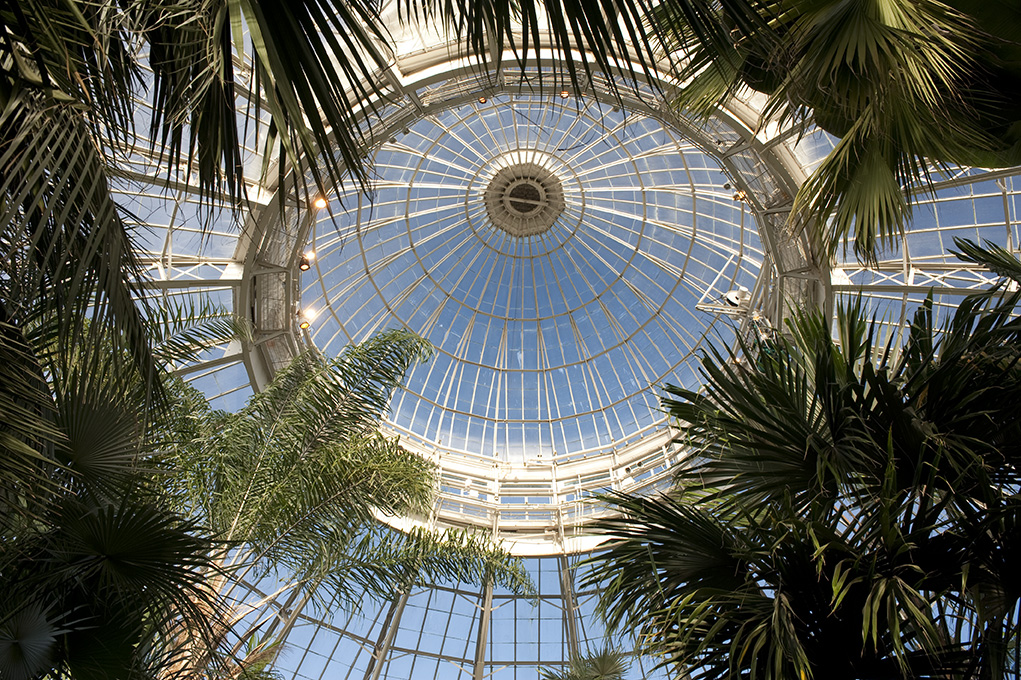
The dome of the Palm House in the Enid A. Haupt Conservatory (photo by Ivo M. Vermeulen)
Posted in Photography on January 8 2011, by Plant Talk
We just love this little conifer, Abies koreana ‘Aurea’, known more commonly as the golden Korean fir. And some of us here see a certain, wise, green character from Star Wars in its silhouette. Do you? Or do you maybe see something different?
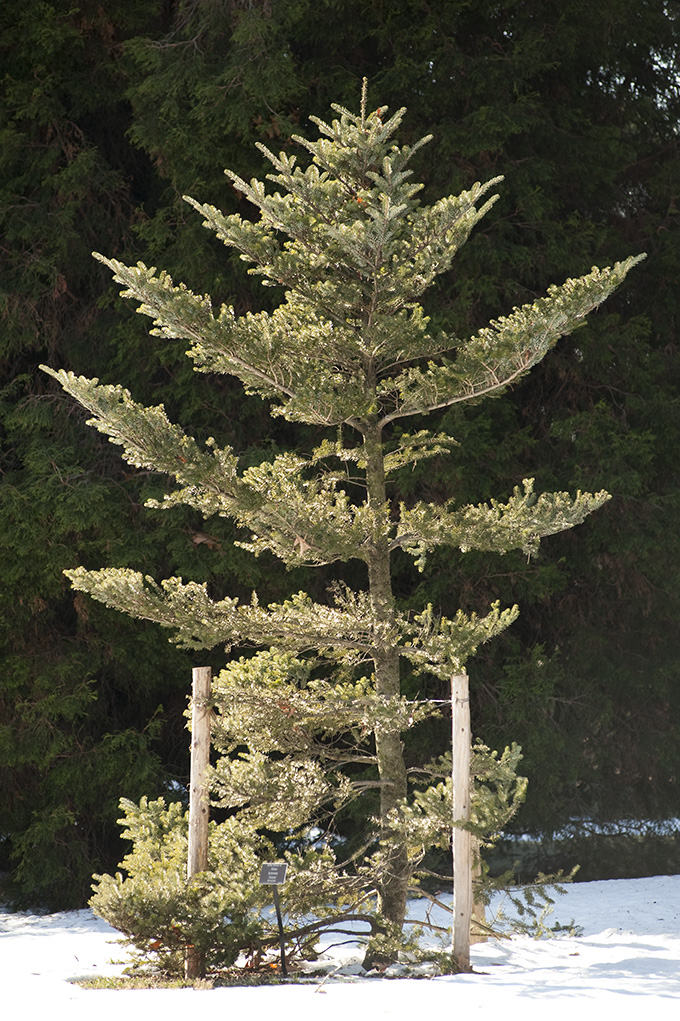
Golden Korean Fir (photo by Ivo M. Vermeulen)
Posted in Around the Garden, Photography on January 7 2011, by Plant Talk
| Ann Rafalko is Director of Online Content. |
I just got back from a walk around the grounds, and just had to show you how beautiful it is here! The sidewalks are mostly clear, and the Train Show is inside. So grab your camera and come visit! It’s gorgeous!
Trees
More below, including a teeny tiny snowman!
Posted in Photography on January 7 2011, by Plant Talk
Why do trees make us think of poems?
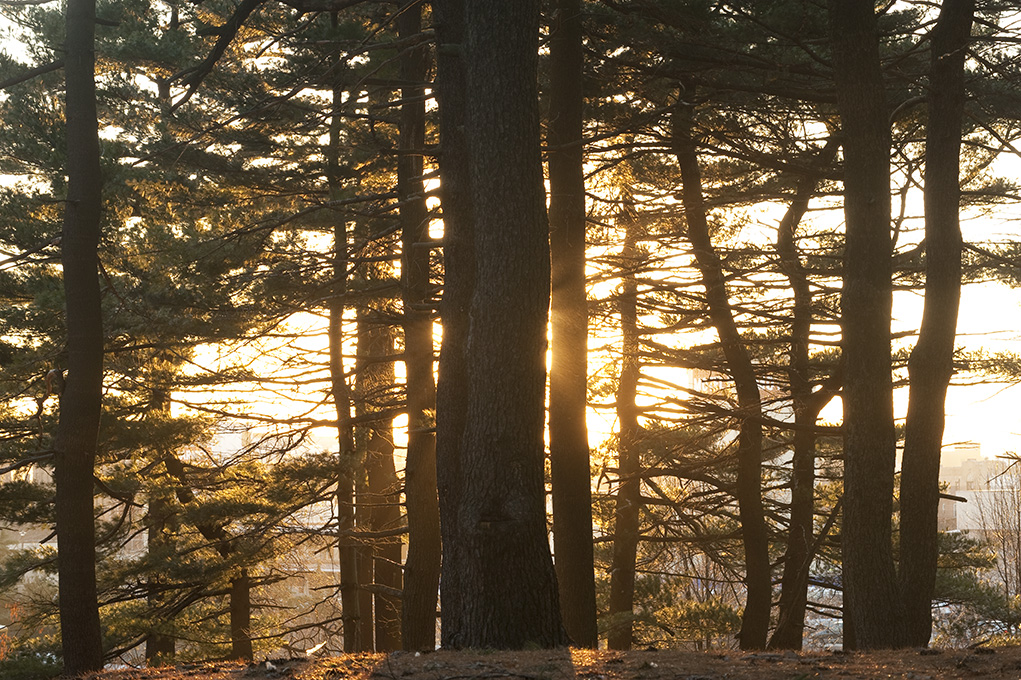
Tree and Light (photo by Ivo M. Vermeulen)
Posted in Wildlife on January 6 2011, by Plant Talk
| Ann Rafalko is Director of Online Content. |
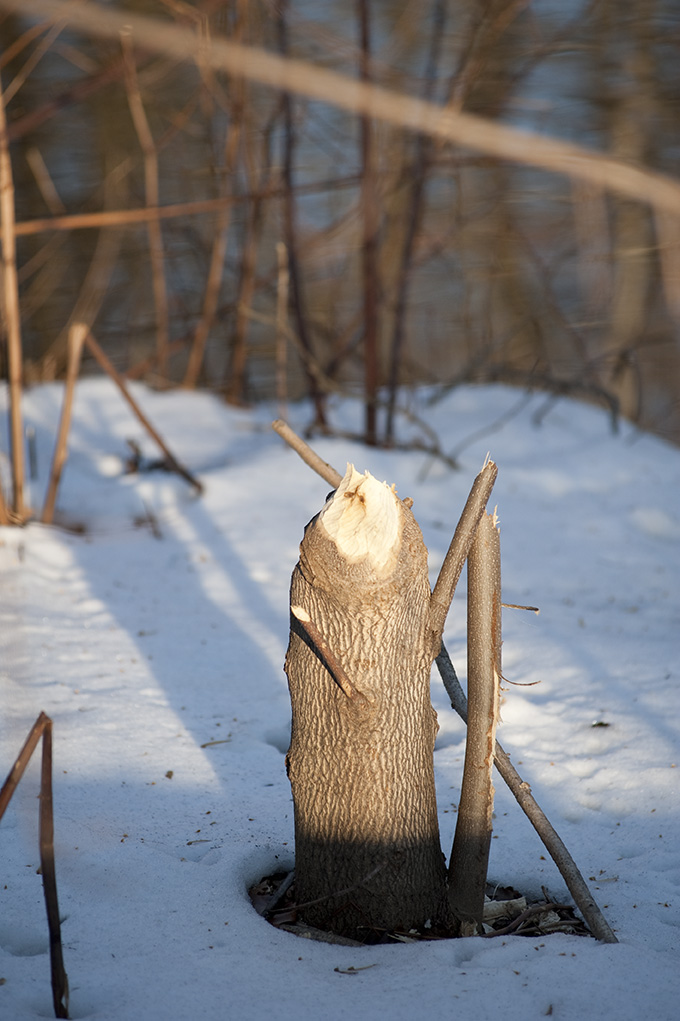 The story of José and Justin Beaver is a tale of two tails.
The story of José and Justin Beaver is a tale of two tails.
In case you’re unfamiliar with the furry duo, perhaps we should offer an introduction. You see, José Beaver is no ordinary beaver. José is, in fact, the first confirmed beaver living within New York City limits in the more than 200 years since his furry forebears were hunted and trapped into local extinction for their luxurious pelts. Beavers were once so important to New York City they are featured on the city’s seal, and frequently act as adornment on buildings around town (and in place names, too).
So, you can see why such a fuss was made when José’s very existence in New York City was confirmed. José is a living link to history. And it only got better when, in October, the existence of José’s pal was confirmed. In a nod to popular culture, he was dubbed Justin Beaver (though, it remains possible that Justin may one day be deemed a Justine–beavers are notoriously hard to sex).
Head below the jump for more on why José and Justin are more than just cute, furry face.
Posted in Photography on January 6 2011, by Plant Talk
The wind sculpts the snow. Or, does the snow capture the shape of the wind?
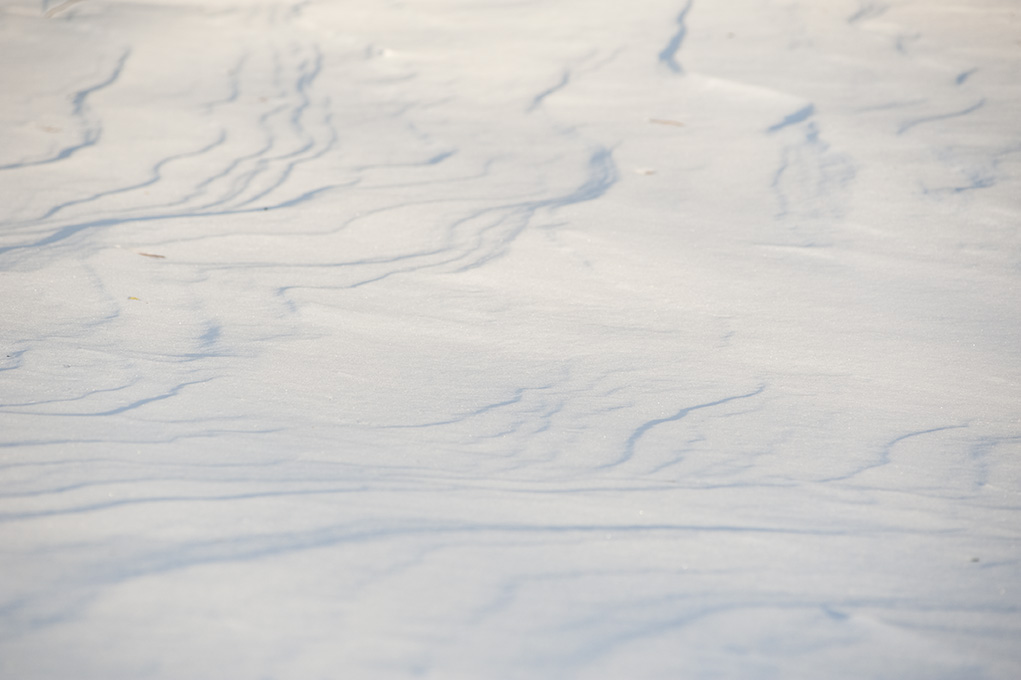
Ripples (photo by Ivo M. Vermeulen)
Posted in Members on January 5 2011, by Plant Talk
| Melanie Patterson is a Membership Coordinator. |
 New Members of NYBG at the Holiday Workshop. Photo by Melanie J. Patterson
New Members of NYBG at the Holiday Workshop. Photo by Melanie J. Patterson2010 was an awesome year here at The New York Botancial Garden. I had the great opportunity to join Members on so many wonderful, enriching trips and programs–a great side-benefit to Membership. We enjoyed guided tours of New York City cultural hot spots, like The Cloisters and the High Line; were given exclusive, behind the scenes tours by NYBG curators of the Conservatory, the Nolen Greenhouses, and the Peggy Rockefeller Rose Garden.
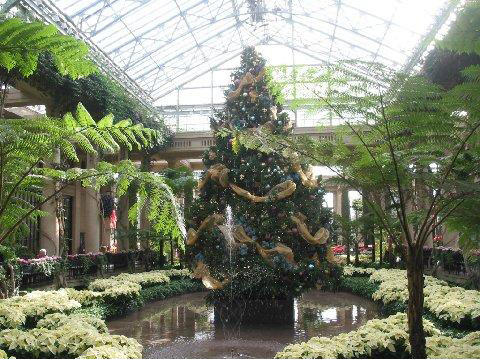 Longwood Gardens at Christmas. Photo by Nicholas Perdikos, Member since 1992
Longwood Gardens at Christmas. Photo by Nicholas Perdikos, Member since 1992I asked a few of our photo-savvy Members to share their pictures of a special trip we took down to Longwood Gardens in Kennett Square, Pa. The Conservatory was beautifully decorated in holiday flair and the water fountain show was tons of fun.
Most recently, at the kids’ holiday workshop, Members and their children created holiday houses in the fashion as those in the Holiday Train Show, using natural ingredients like dried cedar, cinnamon sticks, pine cones, and magnolia leaves.
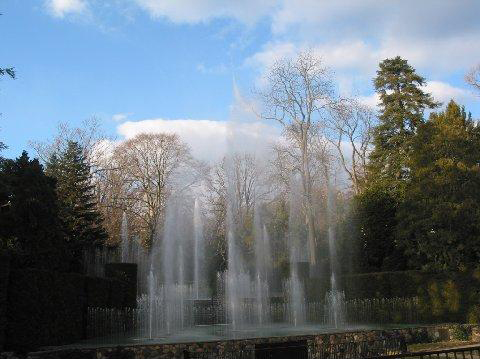 The water fountain show at Longwood Gardens. Photo by Nicholas Perdikos, Member since 1992
The water fountain show at Longwood Gardens. Photo by Nicholas Perdikos, Member since 1992Already scheduled for the New Year, Members will be able to go on guided historical walking tours of New York City, take mansion and garden tours across New York state, and attend the 2011 Philadelphia International Flower Show.
More Member trips and programs are being added all the time. Here’s to a great 2011!
Posted in Science on January 5 2011, by Plant Talk
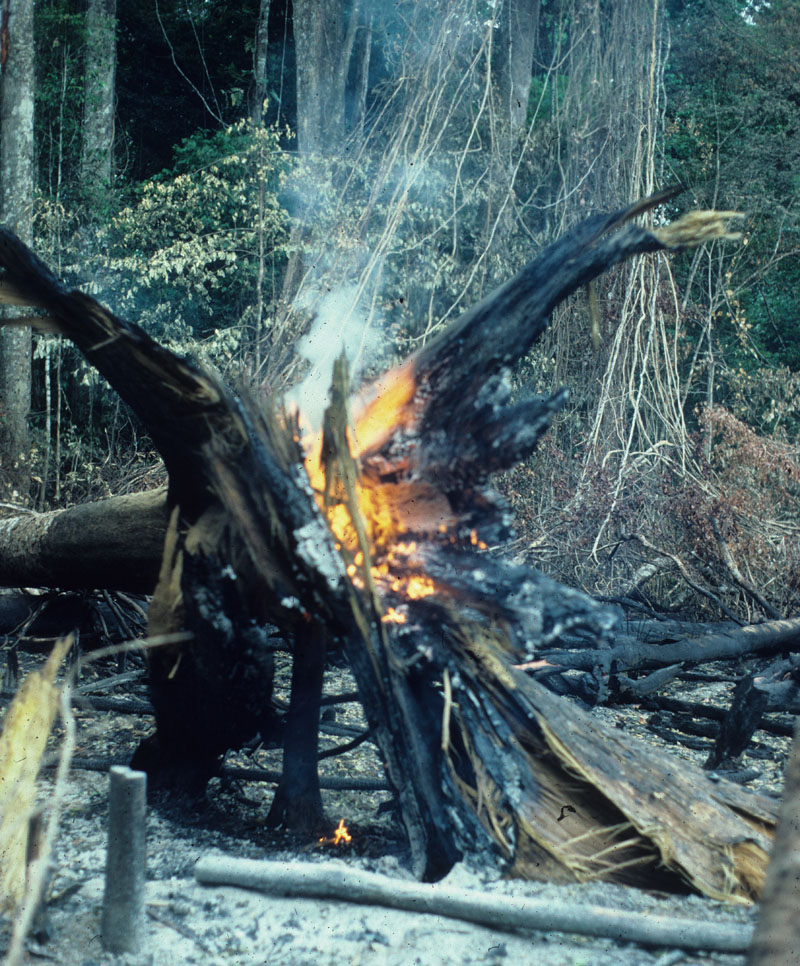 Deforestation followed by fires for creating agricultural fields and pasture releases carbon dioxide into the atmosphere at such an accelerated rate in the tropics that it is a major contributor to global warming. Photo by Scott Mori
Deforestation followed by fires for creating agricultural fields and pasture releases carbon dioxide into the atmosphere at such an accelerated rate in the tropics that it is a major contributor to global warming. Photo by Scott MoriThere are many different types of vegetation in the New World tropics. But rather than being a homogeneous whole, what grows where and when in these tropics is determined to a large extent by water availability and temperature variation. Climate change could potentially have a drastic impact on this region, especially on the rain forests. Liebig’s Law of the Minimum states that plant or animal growth is controlled by the scarcest resource in the environment; this is known as a limiting factor. For example, if a soil possesses all nutrients needed for plant growth except potassium, then the paucity of that nutrient will limit the potential growth of all plants except those that can grow in potassium-poor soils. Potassium is therefore a limiting factor for that soil.
More on the application of Liebig's Law to the destruction of Amazonian rainforests below.
Posted in Photography on January 5 2011, by Plant Talk
For preening, don’t you think?

Red-Tailed Hawk on the roof of the Enid A. Haupt Conservatory (photo by Ann Rafalko)
Posted in Photography on January 4 2011, by Plant Talk
A burst of color to enliven your winter morning.
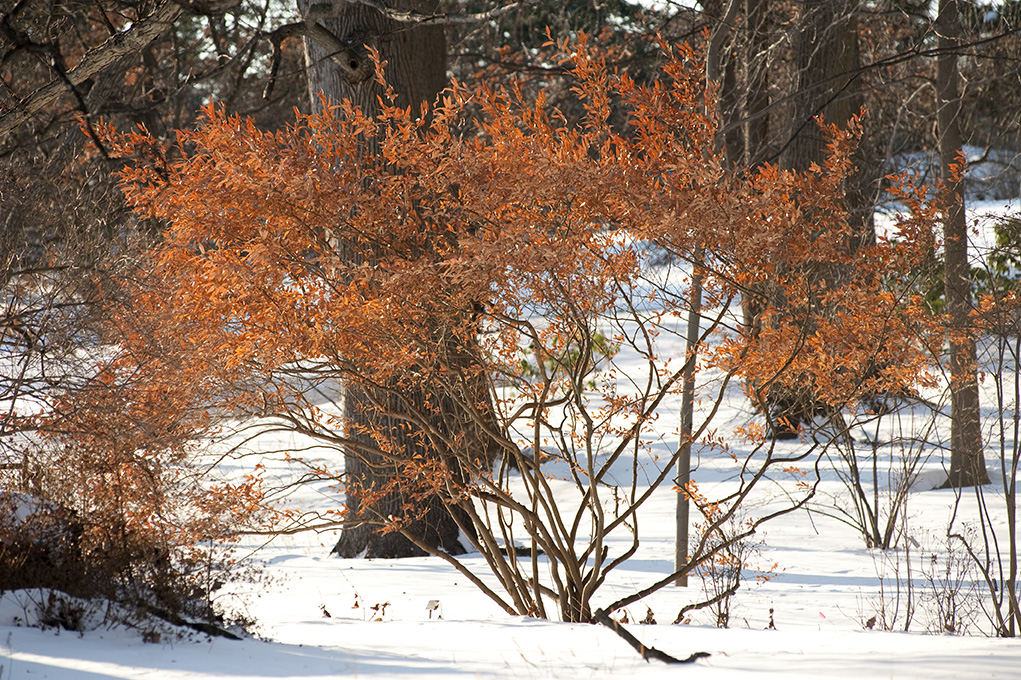
Lindera erythrocarpa Japanese spicebush in the Azalea Garden (photo by Ivo M. Vermeulen)






 New Members of NYBG at the Holiday Workshop. Photo by Melanie J. Patterson
New Members of NYBG at the Holiday Workshop. Photo by Melanie J. Patterson Longwood Gardens at Christmas. Photo by Nicholas Perdikos, Member since 1992
Longwood Gardens at Christmas. Photo by Nicholas Perdikos, Member since 1992 The water fountain show at Longwood Gardens. Photo by Nicholas Perdikos, Member since 1992
The water fountain show at Longwood Gardens. Photo by Nicholas Perdikos, Member since 1992


